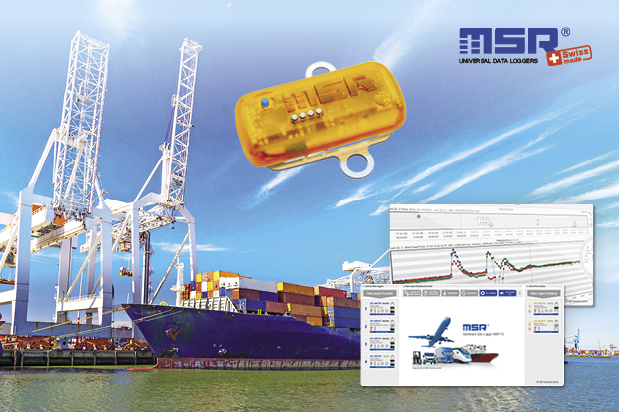«In the event of damage, the MSR data logger can quickly provide a comprehensive picture of the transport journey.»
Marc Wegmüller, VRP / development, Wegmüller AG Attikon
 Deutsch
Deutsch«In the event of damage, the MSR data logger can quickly provide a comprehensive picture of the transport journey.»
Marc Wegmüller, VRP / development, Wegmüller AG Attikon
 determine transport loads · drop tests · optimise packaging · document transport damage · monitor shock, impact, temperature, humidity, pressure, light
determine transport loads · drop tests · optimise packaging · document transport damage · monitor shock, impact, temperature, humidity, pressure, light
MSR transport data loggers are used to monitor the transport and storage of sensitive or valuable goods of all kinds. With their high-precision sensors, high storage capacity and compact format, they are ideal for the complete recording and conclusive documentation of critical transport events such as jolts, shocks, temperature overshoots or undershoots or unacceptable humidity levels.
Particularly high safety requirements are placed on data loggers for monitoring the transport of air cargo. The loggers from MSR Electronics meet all these air cargo regulations and are therefore «air cargo approved».
MSR data loggers meet stringent air cargo security requirements.
WAFER TRANSPORT MONITORING WITH MSR175PLUS DATA LOGGER
Read More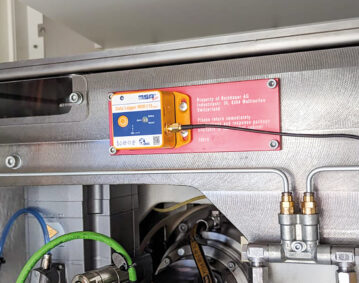
SHOCK DATA LOGGERS MONITOR TRANSPORT OF MACHINES
Read MoreCERN: TRANSPORT MONITORING WITH MSR175PLUS LOGGERS
Read More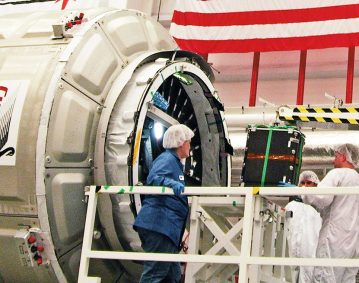
ORBITAL SCI.: MSR165 DATA LOGGERS MONITOR NASA TRANSPORT
Read More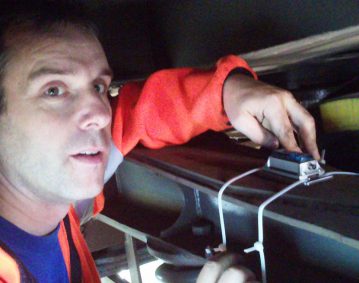
MSR165 LOGGERS DETERMINE RAIL TRANSPORTATION COMFORT FOR STADLER RAIL
Read More
CTI RESEARCH PROJECT: PREVENTION STRATEGIES IN THE TRANSPORT OF FRAGILE PAINTINGS
Read More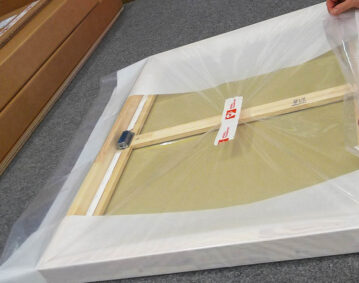
MSR165 SHOCK LOGGER FOR TEST TRANSPORTS OF FRAGILE PAINTINGS
Read More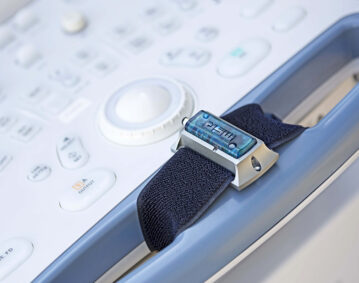
UROVIVA: DATA LOGGERS MONITOR TRANSPORT OF MEDICAL EQUIPMENT
Read More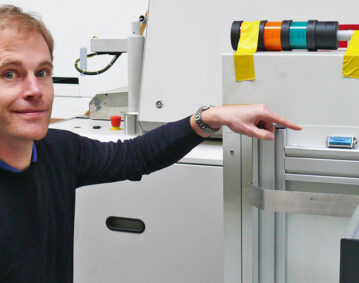
WEGMÜLLER AG: TRANSPORT MONITORING WITH MSR DATA LOGGER
Read More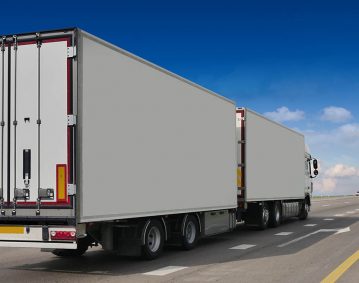
MONITORING TRANSPORT LOADS WITH MSR DATA LOGGERS
Read More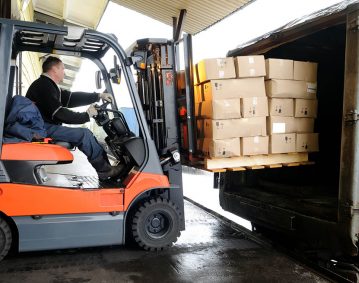
IPC HORMANN: DATA LOGGERS FOR TRANSPORT MONITORING
Read More
Lada Egli, Dipl. El.-Ing.,
Head of Production, MSR Electronics GmbH
There are many transport data loggers on the market, but how do I find the right one? Which logger guarantees me meaningful and conclusive measurement data? If you ask yourself the right questions before purchasing a data logger, you will not only save yourself disappointed expectations, but also expensive claims.
As data logger specialists with years of experience, we know exactly what is important in a transport data logger. Our MSR data loggers are successfully used in thousands of applications worldwide. We recommend that you ask yourself at least the following questions before making a purchase:
Sensitive goods such as precision machinery, chemicals or electronics are exposed to a variety of risks on their way to the customer. Whether on the road or rail, on water or in the air – there is a threat of impact and tilt events both in the loading situations and on the way to the destination. Likewise, fluctuating environmental conditions can be detrimental to the goods being transported. Data loggers use sensors to monitor various environmental parameters such as temperature, air pressure, humidity, lighting conditions and/or mechanical dynamic loads such as shocks and impacts.
Shock events during transportation can have a very negative impact on the mechanical construction of any industrial or consumer product. The damage is not always visible from the outside, which makes the data recorded by acceleration sensors all the more important, as they can be used to clarify liability and quality assurance issues in an evidential manner. In addition, even if the transported goods are insured, the insured damage is often only a small part of a potentially much larger overall loss. Consequential damage from faulty transports, such as losses due to missing goods, unplanned post-production, delays or interruptions to operations, must also be taken into account. The choice of the appropriate shock data logger depends on the goods to be transported and the purpose of the recording. Do you want to measure the load on a cargo by means of drop tests or with a test shipment in order to optimize the packaging as a result? Is it a question of recording the transport as a preventive measure in order to detect any damage to the freight at an early stage? Is it a question of documenting a transport that lasts for weeks in order to comply with standards and regulations?
If the cargo is perishable or highly regulated goods such as frozen products, medicines, organs or even plastic elements, temperature and humidity limits and standards must be complied with and fully documented during transport and storage.
Relative humidity is closely related to temperature via the dew point parameter. The moisture content must also be recorded, for example, in order to be able to quickly determine the cause of corrosion on metal parts or moisture and mold damage on organic materials.
Light (lux) is also an important physical influencing factor, for example for foodstuffs and chemical substances, because solar radiation often has a damaging effect on sensitive goods. However, the parameter “light” is of particular importance in detecting unauthorized manipulation of normally closed containers: Incidence of light indicates that the container has been opened, which may lead to conclusions about a planned or executed act of theft.
Air pressure is also a significant value that can, for example, influence the properties of deformable goods. In this context, hollow bodies made of plastic should be mentioned, but also gas- or liquid-filled, deformable containers. This parameter is particularly important for air freight transports, where the internal pressure in the aircraft must be closely monitored.
One of the most important questions of all. If a transport by truck over a bumpy overland route lasting weeks has to be monitored or if sea freight has to be accompanied for months, a significantly higher storage capacity is required than for a short air freight transport.
The achievable recording duration of a data logger results from its storage capacity and the set measuring rate.
To determine the recording duration of a climate measurement (temperature, relative humidity, air pressure), the storage capacity (number of measured values of the data logger) is divided by the measurement rate.
Assumption: A temperature data logger has a storage capacity of 2 million measured values. If the temperature values are measured and stored twice per minute, the storage capacity of the logger is sufficient for up to 2 years.
2’000’000 measured values / (2 measured values ∙ 60 min . ∙ 24 hours) = 694 days
Data loggers differ in the way they store data. Therefore, no generally valid formula can be created for calculating the recording duration for shock events. In shock mode, the number of recorded events depends on the length of the shock events as well as the storage capacity and storage mode of the data logger. Below we compare the MSR data loggers on a *table:
| Data logger type | Battery [mAh] | ±15 g, Measurement rate [1/s (Hz)] | ±200 g, Measurement rate [1/s (Hz)] | Memory capacity [MEASURED VALUES] | Possible number of shock events2) | approximate measurement duration |
|---|---|---|---|---|---|---|
| MSR165B8 | 1000 | 100…1600 | 100…1600 | ≥ 2 m | ≥ 10’000 | up to 6 months |
| MSR165B8 & N10006 | 1000 | 100…1600 | 100…1600 | ≥ 1 bn | ≥ 5 m | up to 6 months |
| MSR165B52 | 2 x 7700 | 100…1600 | 100…1600 | ≥ 2 m | ≥ 10’000 | up to 5 years |
| MSR165B52 & N10006 | 2 x 7700 | 100…1600 | 100…1600 | ≥ 1 bn | ≥ 5 m | up to 5 years |
| MSR175B16T2AA5 | 230 | 1600 | 3200/6400 | ≥ 2 m | ≥ 1’000 | up to 8 weeks |
| MSR175B16T6H3P5AA5L2 | 230 | 1600 | 3200/6400 | ≥ 2 m | ≥ 1’000 | up to 8 weeks |
| MSR175B54T2AA5 | 7700 | 1600 | 3200/6400 | ≥ 2 m | ≥ 700 | up to 2 years |
| MSR175B54T6H3P5AA5L2 | 7700 | 1600 | 3200/6400 | ≥ 2 m | ≥ 700 | up to 2 years |
| MSR175plus1) | 4000 | 1600 | 6400 | ≥ 4 m | ≥ 1’000 | 3) |
1) Shock detection simultaneously with ±15 g and ±200 g.
2) Typical shock length 200 ms at maximum sampling rate.
3) With GPS up to 55 days, without GPS up to 1.5 years.
Additional recordings such as climate values (temperature, humidity, air pressure, light) reduce the measurement time.
*Table as of March 2023, subject to change and/or error.
This question is important because each object reacts specifically to the stress acting on it. The stress acting on a transport item is directly dependent on the item itself. If, for example, a sensitive medical precision device is being transported, even minor impacts are critical, whereas the threshold is higher when transporting machine tools. For an impact to become critical, it must have a certain minimum acceleration and a minimum duration in the impact event. What is critical for a transport item is different for each transport item and depends on its respective condition.
Basically, the mechanical stress and the actual effect on the object should be determined experimentally with acceleration sensors during the real (transport) load.
Is the cargo to be monitored transported by rail, road, water or air? Depending on the means of transport, different accelerations affect a cargo. If a transport by truck over a bumpy overland route that lasts for weeks has to be monitored or if sea freight is to be accompanied for months, a significantly higher storage capacity is required than for a short air freight transport.
To ensure that the data logger carried can document the load multiple in a meaningful way, a sensor with an appropriate measuring range must be selected. The measuring range designates the maximum recordable values (e.g. ±15 g or ±200 g). Shock loads are specified as the multiple of the acceleration due to gravity (g = 9.81 [m/s²]).
For monitoring pallet stacks, for example, i.e. for measuring light impacts, a sensor ±15 g is usually sufficient. For more intense shocks, such as those that occur during unloading/reloading onto a truck or during ship transport, a data logger with a ±200 g sensor and a high measuring rate is generally recommended in order to record shocks at a greater resolution. The measurement or sampling rate is the number of g-value measurements per unit of time (usually per second – unit Hz). The measuring rate determines the accuracy of the acceleration event.
In order to be able to record transport loads precisely, it has been shown that data loggers should record well over 1,000 times per second in order to be able to map the g-value curves well. Basically, the higher the measuring rate, the more accurately the actual course and the peak values are mapped. The whole thing, of course, in three geometric space axes (x, y, z) in order to obtain acceleration values in all directions.
This question is related to the preceding questions about the type of goods, the duration of the transport and the means of transport. Accordingly, a data logger must be chosen that has a sufficiently high storage capacity so that it does not miss any critical impact. This is the only way to ensure that the measurement data are at all meaningful. In the following, we compare the MSR data loggers on a *table:
| Data logger type | Battery [mAh] | ±15 g, Measurement rate [1/s (Hz)] | ±200 g, Measurement rate [1/s (Hz)] | Memory capacity [MEASURED VALUES] | Possible number of shock events2) | approximate measurement duration |
|---|---|---|---|---|---|---|
| MSR165B8 | 1000 | 100…1600 | 100…1600 | ≥ 2 m | ≥ 10’000 | up to 6 months |
| MSR165B8 & N10006 | 1000 | 100…1600 | 100…1600 | ≥ 1 bn | ≥ 5 m | up to 6 months |
| MSR165B52 | 2 x 7700 | 100…1600 | 100…1600 | ≥ 2 m | ≥ 10’000 | up to 5 years |
| MSR165B52 & N10006 | 2 x 7700 | 100…1600 | 100…1600 | ≥ 1 bn | ≥ 5 m | up to 5 years |
| MSR175B16T2AA5 | 230 | 1600 | 3200/6400 | ≥ 2 m | ≥ 1’000 | up to 8 weeks |
| MSR175B16T6H3P5AA5L2 | 230 | 1600 | 3200/6400 | ≥ 2 m | ≥ 1’000 | up to 8 weeks |
| MSR175B54T2AA5 | 7700 | 1600 | 3200/6400 | ≥ 2 m | ≥ 700 | up to 2 years |
| MSR175B54T6H3P5AA5L2 | 7700 | 1600 | 3200/6400 | ≥ 2 m | ≥ 700 | up to 2 years |
| MSR175plus1) | 4000 | 1600 | 6400 | ≥ 4 m | ≥ 1’000 | 3) |
1) Shock detection simultaneously with ±15 g and ±200 g.
2) Typical shock length 200 ms at maximum sampling rate.
3) With GPS up to 55 days, without GPS up to 1.5 years.
Additional recordings such as climate values (temperature, humidity, air pressure, light) reduce the measurement time.
Further information can be found in our basic information on acceleration measurements.
*Table as of March 2023, subject to change and/or error.
When choosing a data logger, special attention must be paid to the evaluation software. Evaluation software must be able to process millions of data quickly. It must be easy and fast to determine relevant shock events, and it must be possible to examine and export the data curves or measuring points of each individual shock.
In the case of a shock, for example, it is often not sufficient to know the peak value for the acceleration; rather, the associated duration of the shock is equally relevant, as this can be used to determine the intensity of the shock directly or in comparison to other shocks on the object. Two impacts with the same intensity can have different effects on the object, as the absolute values for impact duration and acceleration always determine the effect on the object.
In the MSR ShockViewer software supplied with the MSR165, MSR175 and MSR175plus acceleration data loggers, it is possible to filter shock events with the aid of the values for intensity (IoT) and pulse time (Tot) in order to concentrate on the most serious events in the analysis. possible. Spectral analysis data of a selected shock event can also be displayed and exported either in a table or in a diagram. Several types of spectral analyses (e.g. Magnitude, Power Spec, etc.) and several types of weighting windows (e.g. Rectangle, Gauss, Hamming, etc.) are available.
If you also want to use your data logger for vibration measurements, we recommend the MSR165 data logger. In addition to recordings in shock mode, the MSR165 can also permanently record vibrations. In order to be able to correctly record vibrations with the help of acceleration sensors, appropriately high measuring rates suitable for the vibration must be selected for the measurements. Due to the large amount of data, the duration of the recording is limited. You can increase the storage capacity of the MSR165 (standard ≥ 2 million measured values) to over 1 billion measured values with a microSD card.
In the following *table you can see the approximate duration for the two data logger versions MSR165B8 (LiPo battery 1000 mAh), and MSR165B52 (Li-SOCl2 batteries 3.6 V, 2 x 7700 mAh), depending on the sampling rate.
| MEASUREMENT RATE | DATA LOGGER MSR165 | |||
| MSR165B8 | MSR165B52 | |||
| MEMORY | LiPo-BATTERY | MEMORY | Li-SOCl2-BATTERY | |
| 25 Hz | 15 hours | 23 days | 15 hours | 354 days |
| 50 Hz | 7 hours | 12 days | 7 hours | 184 days |
| 100 Hz | 3 hours | 5 days | 3 hours | 77 days |
| 200 Hz | 113 min. | 3 days | 113 min. | 46 days |
| 400 Hz | 56 min. | 40 hours | 56 min. | 26 days |
| 800 Hz | 28 min. | 20 hours | 28 min. | 13 days |
| 1600 Hz | 14 min. | 10 hours | 14 min. | 6.5 days |
Additional recordings such as climate values (temperature, humidity, air pressure, light) reduce the measurement time.
For further information, please refer to our basic information on acceleration measurements.
*Table as of March 2023, subject to change and/or error.
The sampling or measuring rate is the number of g-value measurements per unit of time (usually per second – unit Hz). The measuring rate determines the accuracy of the recording of the acceleration event. The higher the measuring rate, the finer the actual course of an acceleration event can be resolved. In order to be able to precisely record transport loads, it has been shown that a data logger should record well over 10,000 times per second in order to be able to map the g-value curves well. Of course, this should be done in three geometric space axes (x, y, z) in order to obtain acceleration values in all directions.
The disadvantage of high measurement rates is that there is a very high volume of data, so that the memory and performance limits of the logger may be reached quickly. The continuous measurement and processing or storage of the data also entails high power consumption, which limits the mobile operating times of the logger. With an event-based measurement, it is possible to record specific impacts that exceed a critical duration and/or strength. In addition to the improved clarity of long-term measurements, this also offers the advantage that only relevant events are recorded and thus energy and storage capacity are used more effectively.
If the focus of the measurement task is not on short-term shock analyses but on long-term monitoring, threshold values can be set to record specific shocks that exceed a certain preset g-value (Threshold) and a minimum shock duration (ToT). This procedure saves storage capacity, as only relevant events are stored. In this case, it makes sense to also store some g-values that lie before and after the event in order to be able to evaluate the data for the entire event. With MSR transport data loggers, 32 measuring points per axis before the event and 100 measuring points per axis after the event are automatically saved.
| Data logger | Measurement/Storage rate |
|---|---|
| MSR165 | The measuring rate can be set between 25 Hz and 1600 Hz or can be omitted altogether (e.g. if permanent recording is required for vibration measurements). |
| MSR175 | 3 shock measurement modes: either ±200 g at 6400 Hz or ±200 g at 3200 Hz or ±15 g at 1600 Hz |
| MSR175plus | Shock measurement mode: simultaneous measurement ±200 g at 6400 Hz and ±15 g at 1600 Hz |
If you want to know and, if necessary, prove where your transport goods have been and for how long, then a data logger such as the MSR175plus with GPS tracking can be helpful, because the recorded data can be used to quickly locate critical transport events.
Like a «black box», the MSR175plus data logger records problematic events such as impacts, shocks, temperature overshoots or undershoots or unacceptable humidity levels and records their geographical position with GPS and a time stamp. The logger is equipped with a GPS/GNSS (Global Navigation Satellite System) receiver, which allows it to record the satellite-based position data.
All data loggers containing lithium polymer batteries are subject to certain IATA (International Air Transport Association) regulations when transported by air. MSR transport data loggers comply with stricter aviation safety conditions.
In our FAQ you will find the documents provided by MSR Electronics GmbH for download. Please contact your freight forwarder directly for information on locally applicable regulations.
What is an acceleration data logger? How can we record vibrations? What do we mean by a jolt or shock? What methods can we use to detect damage to cargo caused by shocks? What does «fast peak» mean? And which MSR data logger is best suited for which measuring task?
We discuss these questions for you in the «Basic information on acceleration measurements using the MSR145, MSR165 and MSR175 data loggers».

By loading the video, you agree to YouTube's privacy policy.
Learn more

By loading the video, you agree to YouTube's privacy policy.
Learn more

By loading the video, you agree to YouTube's privacy policy.
Learn more

By loading the video, you agree to YouTube's privacy policy.
Learn more
More than 90 MSR sales partners in over 50 countries worldwide are available to provide you with personal advice.












































write any text and make custom design that you want to show.


